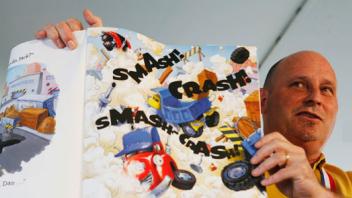Listening to literature being read aloud is one of the most valuable and pleasurable experiences beginning readers and writers can have. Read alouds should be part of every child’s day.
Story time, circle time, and read alouds offer a chance to model good reading and thinking strategies and to expose young learners to a rich variety of literature. When this exposure is accompanied by supportive and engaging discussions, children are able to extend their world view and develop important critical thinking skills.
The following are some helpful hints that will help you make the most of your read aloud time.
Plan enough time for each session (15-20 minutes)
You’ll want to give yourself and the children enough time to read aloud, to enjoy, and to discuss the story, poem, or information text.
Choose stories or texts that respond to children’s interests and experiences
For very young children or emergent readers, choose books with vivid pictures, a strong story line, engaging characters, and evocative language. Humorous and predictable books are particularly successful.
Preview the book before you read it with the group so you can anticipate questions or reactions
Practice reading the book through so you can decide where to pause for emphasis and where to elicit questions, predictions, or reactions.
Introduce the book to the group
Point out the cover illustration, title, and author. Invite the children to predict what the book is about, and talk about how the book might connect to their own experience or to other books they’ve heard or read. You can also give a brief explanation about why you chose to read the book. “This is the story of a boy who goes on an unusual trip. I chose it because you just came back from a trip.” Or “This is the story about a special friendship between a mouse and a whale. I have read this many times. I wonder what you will think about it.”
Read with expression
Let your voice reflect the tone of the story or the personalities of the characters. Don’t read too fast. Vary your pace so you can pause for emphasis. Allow time for children to think about what’s happening or what might come next.
Build in time for listeners to respond along the way
Allow time for children to study the pictures as you read, make comments, and ask questions about the story.
Encourage predictions
Ask children what they think will happen next. Help them confirm or revise these predictions as the story unfolds. Try to honor many ideas and interpretations, not just the “correct” ones. Instead of accepting or rejecting comments or ideas as right or wrong, use comments such as “That’s one possibility, let’s see what the author has in mind.” or “Well that’s an interesting idea. How did you think of that?”
Watch your audience
Watch the children’s expressions and body language and be sensitive to signs of boredom or confusion. You may need to change your reading plan, change the book, or do more preparation next time.
Save time at the end of the story to get reactions
Ask open-ended questions that don’t have right or wrong answers and that can’t be answered with a yes or no reply. For instance, ask what the child liked (or disliked) about the book and why. You may ask what he or she thought about the characters or how the problem was solved. Find out if the book made listeners think of any personal experiences or other books they’ve heard or read.
Point out parts of the story you noticed or especially liked
Show the children special language patterns or phrases or parts of the text that made you feel or visualize something. Ask children if there were other parts of the book they noticed.
Remember that for some children, listening to stories is a new experience
Some children aren’t used to being read to and will need to develop that interest and ability. Start with short, interesting stories with strong pictures. In some cases, allow active children to manipulate play dough or to draw while listening. Be responsive to facial expressions and body language.
Encourage discussion about the story
Ask the children questions about what’s going on and encourage them to predict what will come next. Be sure, though, not to turn the discussion into a quiz!
Most importantly: Have a good time!
Updated and adapted from: Reading Aloud to Children: Helpful Hints. (August, 1997). America Reads at Bank Street College of Education. Available at http://bankstreet.edu/literacy-guide/sample-tutoring-lessons/reading-aloud-children-helpful-hints/.
